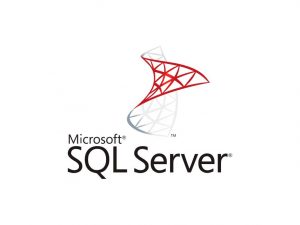
14 Jul SQL Server End of Life: What Now?
Software is an essential part of companies nowadays. It not only supports their core business processes and products, but it also drives them. As the backbone of your organisation, databases are no exception to this rule. It is always in your best interest to keep all software up to date, but sometimes things just slip under the radar.
In a previous article, we already looked at how you can check if your SQL version is still supported, and what to do when you need to run an older edition like SQL Server 2014 or SQL Server 2016. But what if it is already too late? In this article, we will look at the difference between out of support and end of life, its impact on your business, which version of SQL Server you should upgrade to, and how you can migrate to a new version.
What is the difference between SQL Server end of life and out of support?
End of life (EOL) means that a manufacturer or software vendor has stopped supporting a piece of software (or hardware) entirely. For example, Microsoft no longer supports any version of Internet Explorer. Out of support or end of support (EOS) means that only a certain version of a piece of software is no longer supported. For example, Microsoft still supports SQL Server 2019 while it no longer supports SQL Server 2008.
However, both terms are generally used interchangeably, and most people search for “end of life” when they mean “out of support”. Because we want to help out as many people as possible, we have decided to use both terms in this article.

What is the impact of an out–of–support/end-of-life SQL Server?
The main concern is security. By not having the most recent version of Microsoft SQL Server, your infrastructure runs a severely increased risk of being compromised. Besides security patches, out of support versions also no longer receive content updates with new features and bug fixes. This means that you risk interrupting business continuity with a bug that your DBAs can no longer fix.
Should you upgrade to SQL Server 2014, 2016, 2019 or 2022?
As a general rule, you should always aim for the latest stable version available, which at the time of writing is the 2019 edition. Microsoft SQL Server 2022 is currently only available as a preview. Besides the benefits listed above, upgrading to the most recent version also ensures that you can maximize the usage time of your new licence.
As a reminder, Microsoft supports each version for ten years, first as mainstream and then as extended support. Have a look at our article to learn more about the differences.

How can you migrate your Microsoft SQL Server version?
First off: if your database is used by external software, start by contacting your software provider to check if your version of their software is compatible with the SQL Server version you want to upgrade to. Afterwards, continue with the following steps:
Step one: development and testing in DEV
It is important to not start in a production (PROD) environment. Instead, create a new development (DEV) SQL Server and migrate your database there. When doing so, make sure that your team fully tests any underlying applications. This avoids compatibility issues down the road.
Step two: business testing in UAT
Then, repeat this process in your user acceptance testing (UAT) environment. Just like the DEV environment for developers, the UAT environment lets the business test the new environment. We recommend larger enterprises to save a logging file or email that states the business executed the tests successfully to avoid future discussions.
Step three: migration to PROD
Finally, migrate your database to the production (PROD) environment. Check with the business if the previous databases can be brought offline or if they should be made read-only, and make sure you have a fallback plan. Check Microsoft’s documentation if you can uninstall the intended patch, and install the new version on an inactive node if you are using a cluster.
Are you looking to update your SQL Server to the latest version? Still not sure if you should upgrade at all? Need someone to take a thorough look at your data infrastructure? Contact us, and we’ll be happy to help you out!

